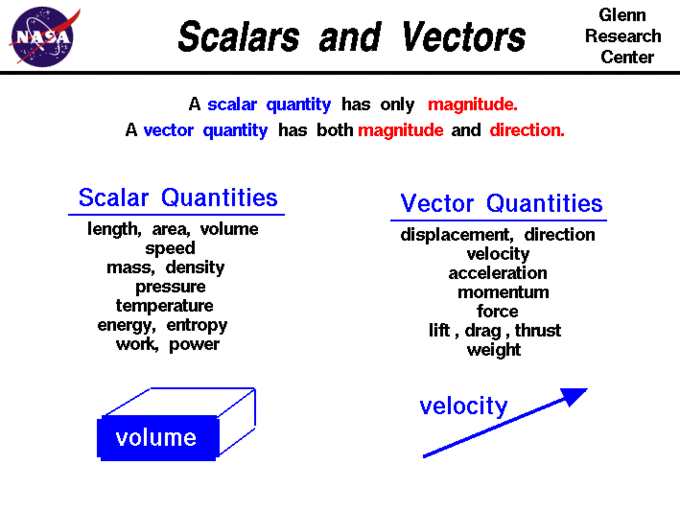What is the difference between distance and displacement? Whereas displacement is defined by both direction and magnitude, distance is defined by magnitude alone. Displacement is an example of a vector quantity. Distance is an example of a scalar quantity. A vector is any quantity with both magnitude and direction. Other examples of vectors include a velocity of 90 km/h east and a force of 500 newtons straight down.
In mathematics, physics, and engineering, a vector is a geometric object that has a magnitude (or length) and direction and can be added to other vectors according to vector algebra. The direction of a vector in one-dimensional motion is given simply by a plus (+) or minus (−) sign. A vector is frequently represented by a line segment with a definite direction, or graphically as an arrow, connecting an initial point A with a terminal point B, as shown in .

Vector representation
A vector is frequently represented by a line segment with a definite direction, or graphically as an arrow, connecting an initial point A with a terminal point B.
Some physical quantities, like distance, either have no direction or no specified direction. In physics, a scalar is a simple physical quantity that is not changed by coordinate system rotations or translations. It is any quantity that can be expressed by a single number and has a magnitude, but no direction. For example, a 20ºC temperature, the 250 kilocalories (250 Calories) of energy in a candy bar, a 90 km/h speed limit, a person's 1.8 m height, and a distance of 2.0 m are all scalars, or quantities with no specified direction. Note, however, that a scalar can be negative, such as a −20ºC temperature. In this case, the minus sign indicates a point on a scale rather than a direction. Scalars are never represented by arrows. (A comparison of scalars vs. vectors is shown in . )

Scalars vs. Vectors
A brief list of quantities that are either scalars or vectors.